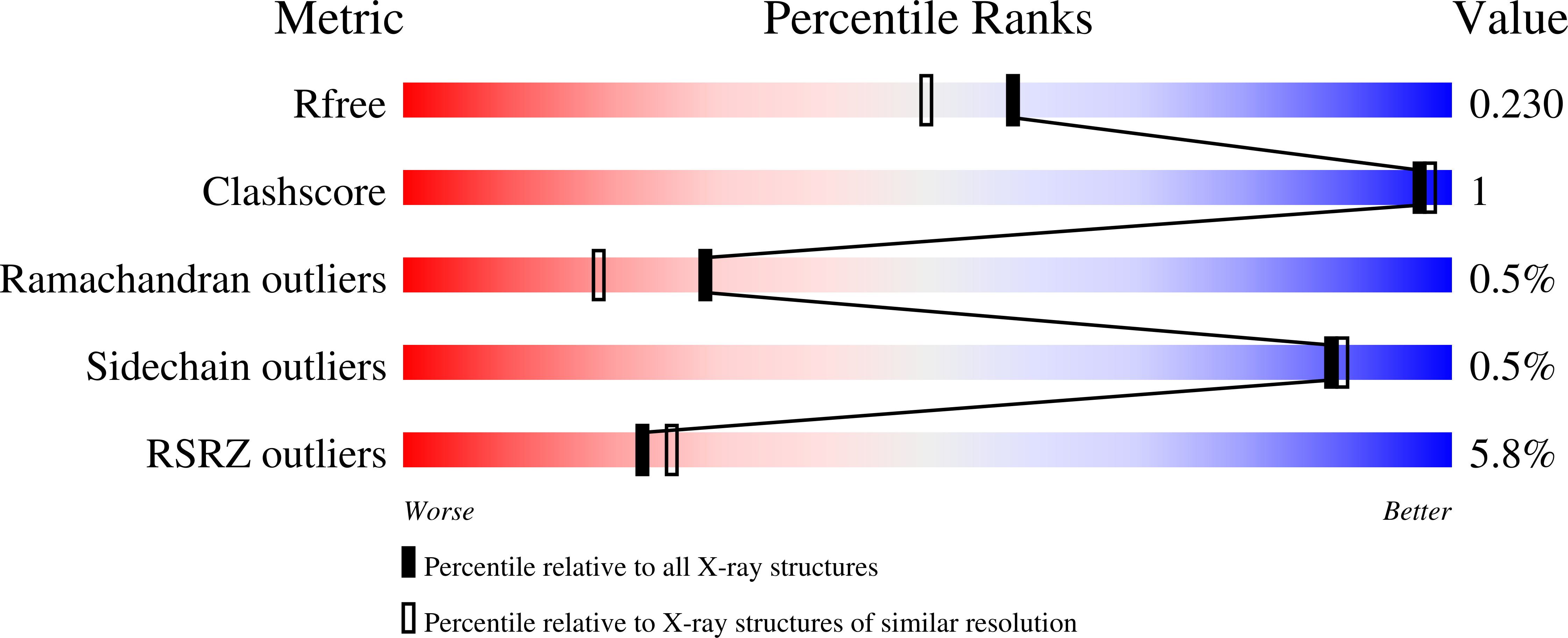Structural plasticity among glutathione transferase Phi members: natural combination of catalytic residues confers dual biochemical activities.
Pegeot, H., Mathiot, S., Perrot, T., Gense, F., Hecker, A., Didierjean, C., Rouhier, N.(2017) FEBS J 284: 2442-2463
- PubMed: 28622459
- DOI: https://doi.org/10.1111/febs.14138
- Primary Citation of Related Structures:
5EY6, 5F05, 5F06, 5F07 - PubMed Abstract:
The glutathione transferase (GST) gene family is divided into 14 classes in photosynthetic organisms. Among them, the Phi class (GSTF) is composed of a large number of genes that are often induced in response to environmental constraints due to their ability to detoxify xenobiotics, to their peroxidase activity and to their involvement in the biosynthesis and/or transport of secondary metabolites. However, the exact functions of GSTFs from many plants including Populus trichocarpa are unknown. Here, following GSTF1 characterization, we have performed a comparative analysis of the seven other GSTFs found in poplar by systematically evaluating the biochemical and enzymatic properties of the corresponding recombinant proteins and of variants mutated for active site residues and by determining the three-dimensional structures of several representatives. Owing to the presence of a cysteine with a pK a value around 5 in their active site, GSTF3, F7, and F8 displayed a thiol transferase activity in addition to the usual glutathione transferase and peroxidase activities. From structural analyses, it appeared that these dual biochemical properties originate from the existence of a certain variability in the β1-α1 loop. This allows positioning of several active site residues at proximity of the glutathione molecule, which itself remains unchanged in GSTF three-dimensional structures. These results highlight the promiscuity of some GSTFs and that changes of active site residues in some isoforms during evolution generated functional diversity by modifying their activity profile. Structural data are available in the PDB under the accession numbers 5EY6, 5F05, 5F06, and 5F07.
Organizational Affiliation:
UMR 1136 Interactions Arbres/Microorganismes, Faculté des Sciences et Technologies, Université de Lorraine/INRA, Vandoeuvre-lès-Nancy, France.
















